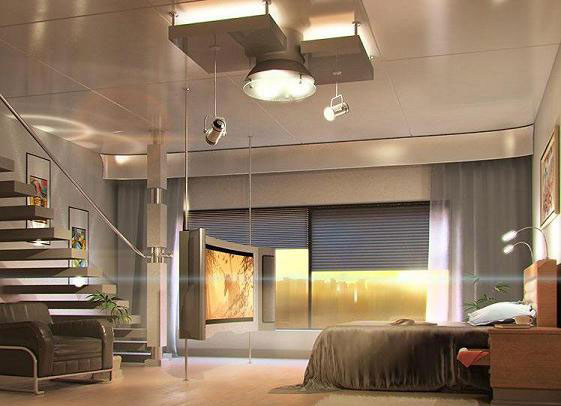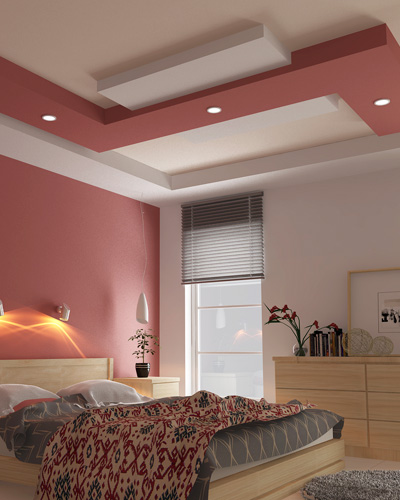Table Of Content

Asian Zen design style uses natural elements to create a sense of harmony within the space. This can be done by incorporating plants, water features, and natural materials into the decor. For example, you might choose to use bamboo flooring or furniture made from wood or wicker.
Modern

Traditional interior design can have a very classic and timeless feel to it. It stems from 18th- and 19th-century British and French designs and is characterized by ornately detailed dark wood, curved furniture details, and elegant upholstery and window coverings. Traditional interior design can feel formal at times, but it can easily be mixed with modern pieces to keep the look fresh. This interior design style works especially well for people who love and appreciate antiques and enjoy mixing old and new. Infuse a bit of beachy flair into your home with tropical style, which combines influences from various locations like Hawaii and French Polynesia. Furniture can be made up of different natural materials like rattan, bamboo and wicker.
Carrie Livingston Design
In essence, Japandi isn’t just a trend, it’s a lifestyle shift towards elegance and peace. Read our extensive article on maximalism here which includes many excellent examples. I had the privilege to do a driving tour of midcentury homes in Palm Springs and even managed to check out some open houses of a few midcentury homes. Not to be mistaken for an anything goes spirit, eclectic design is all about consistency, go-to hues, and best of all, the freedom to explore creative directions with studied nuances.
14 Best Dallas Interior Designers on the AD PRO Directory - Architectural Digest
14 Best Dallas Interior Designers on the AD PRO Directory.
Posted: Thu, 29 Feb 2024 08:00:00 GMT [source]
Vintage
While coastal style leans into the beauty of soft waves and warm sand, mountain-inspired interior design style embraces the beauty of mountain peaks and lush woods. "You won't see a lot of white drywall. Instead, look to wood paneled walls and ceilings, statement stone fireplaces, and neutral, hard-wearing materials like wool and leather in mountain-style interiors." Homes which seek to champion the Eclectic interior design style typically incorporate elements from a range of different design approaches into one setting. The interior design style known as Mid-Century Modern first came to prominence after World War Two, bridging the decades between 1940 and 1970.
Japandi: the perfect blend
Since the entire process is done with painstaking care by hand, each piece of furniture of lighting is a near one-of-a-kind. The most casual of all interior design styles is the industrial look, a trend born out of necessity in the 1960s that still thrives today. Brick walls, pipes, and steel structures are left exposed to deliberately contribute to a dramatic effect. Patinated wood, weathered leather, and rough concrete create a relaxed, worn-in look with a masculine edge. If you don’t want to forgo comfort, you can tweak things with pelts and colored velvet cushions in dark shades of rust, green, or blue.
For Bauhaus followers, form always follows function, so unnecessary flourishes should be avoided. A great advantage of this straightforward, simple design is its timeless appeal. In interior design, this special relationship is reflected largely through the use of materials such as natural stone, paper, and wood. The big difference between this and a pure Scandi look is that these spaces often make use of a darker, richer color palette. In general, the Japanese influence allows for a broader use of tones such as black, dark green, terra-cotta, and eggplant.
Space Age
Nature is embraced by Brazilian interior design and can be found in botanical patterns such as leaves and flowers, and in the liberal use of potted trees and plants throughout. The Traditional style of home décor has its roots in 18th and 19th century Europe and is based on conventional ideas from that time of how a room should look. Despite hailing from a specific time period, Traditional interiors seek to exhibit a timeless elegance that combines warm tones and cozy fabrics with classic choices of furniture and furnishings. Rooms are typically designed to be functional and family-friendly, with familiar, comfortable pieces prioritized over what’s currently in fashion.
How to achieve contemporary interior design in your home
Stone, wood, glass, and bamboo are typically used in these types of interiors, with an emphasis on quality over quantity. Whether it’s the gentle patina of weathered furniture or the flickering glow of candlelight, French country interiors have a magical way of evoking a sense of nostalgia and serenity. It’s a design style that captures the essence of a romantic countryside retreat, inviting you to immerse yourself in the welcoming atmosphere. Rust, terracotta, and cactus green, are a few favorites amongst designers. Whereas furniture is more on the heavy side, often adorning thick legs and bulky finishes.
5 Best Interior Design Trends of 2023, According to Experts - Harper's BAZAAR
5 Best Interior Design Trends of 2023, According to Experts.
Posted: Tue, 15 Aug 2023 07:00:00 GMT [source]
Furnishings are constructed of warm woods such as pine and oak, and feature clean lines with little ornamentation. Wooden tables, chairs, cabinets and dressers typically have a worn painted finish. Metal accents are brought forth using light fixtures such as bronze wall sconces or copper lanterns. Milk painted mason jars in soft pastel colors are often used as decorative containers on open shelves.
Founded by Summer Jensen, the firm is dedicated to contrasting light and shadow, exquisitely meticulous attention to detail, and a deference to the natural environment. Mastering the approach of bringing authentic old-world design and blending it with current contemporary design. His philosophy blurs the lines of time, creating timeless works of art in the interiors of hundreds of homes nationwide. The Art Deco design style is inspired by the glamour of the 1920s and 1930s.
Silver is a commonly used material, and it’s typically used to channel a marine motif. Silver sculptures of dolphins, mermaids and shells are interspersed throughout Jacobean design, which was an early Renaissance style during the reign of King James VI. The style blends new and repurposed items for a unique combination of modern and vintage. Industrial design is characterized by clean open spaces – every room from the kitchen to the basement contains high, spacious loft-like ceilings.
Perhaps the most defining element of Gothic style is the pointed arches – you’ll see doors, entryways and windows in this iconic shape. Rib-vaulted ceilings and flying buttresses create a striking interior space. Contrary to popular belief, Gothic style isn’t all about embracing black.
It focuses on natural materials like steel, glass and reinforced concrete, which are used on floors, countertops and appliances because of their lack of detail and ornamentation. Geometric shapes are emphasized through the use of tables, chairs and desks. Fabrics like curtains and bed linens feature a balanced mix of solids and bold, graphic patterns.
Hailing from the US in the 1930s, striking patterns, clear lines, bright colors, and simple, geometric shapes dominate homes decorated in this style. The Contemporary interior design style refers to what is in fashion right now–a unique blend of subtlety and sophistication. Contemporary interiors generally include minimal elements combined with high-tech details, with room layouts that are more streamlined than typically modern interiors. Bohemian (also known as “Boho”) is an interior design style that marries multiple aesthetics and cultural influences to create a laid-back and miscellaneous look. Transitional interior design is a marriage of traditional and modern styles.
The pale color palettes with floral patterns pair perfectly with whitewashed floors and walls. Our designers love the distressed and rustic vibe and how it is often contrasted with glamorous accents like crystal chandeliers. Similarly to the mid-century style, bohemian interiors are continuing to gain popularity. Because so many retailers are jumping on the boho train there is no better time than now to explore your bohemian side. In a nutshell, bohemian design is a free-spirited aesthetic that mixes different cultures and artistic expressions into an eclectic style that thinks outside the box.













